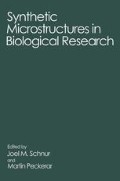Abstract
Lithium niobate is a piezoelectric substrate of interest for applications as an electro-acoustic immunosensor. The activation of lithium niobate substrates with antibody films is carried out by using the standard immobilization technique, i.e. silanization with 3-aminopropyltriethoxysilane prior to linkage of antibody molecules via a glutaraldehyde crosslinker. The cleaning of the substrate prior to silanization was achieved by microwave and ozone/uv cleaning. X-ray photoelectron spectra show a significant reduction of impurities compared to cleaning with organic solvents only. Silanization was performed in toluene solution, toluene vapour, and by chemical vapour deposition. The differences between the various silanization processes for antigen binding examined by enzyme linked immunosorbent assay are small. Using protein G as an immobilized binding molecule for antibodies the binding capacity was enhanced by 40%.
Access this chapter
Tax calculation will be finalised at checkout
Purchases are for personal use only
Preview
Unable to display preview. Download preview PDF.
References
P. Cuatrecasas, M. Wilchek, and C. B. Antinsen, Selective enzyme purification by affinity chromatography, Proc. Nat. Acad. Sci. USA 61:636 (1968).
P. Cuatrecasas, Protein purification by affinity chromatography, J. Biol. Chem. 245:3059 (1970).
K. Mosbach, Immobilized enzymes, Trends Biochem. Sci. 5:1 (1980).
J. L. Guesdon and S. Avrameas, Solid phase enzyme immunoassays, Appl. Biochem Bioeng. 3:207 (1981).
W. H. Scouten, A survey of enzyme coupling techniques, Meth. Ewymol 135:30 (1987).
F. Josse, Z. A. Shana, D. T. Haworth, S.. Liew, and M. Grunze, On the use of ZX-LiNbO3 acoustic plate mode devices detectors for dilute electrolytes, Sens, and Act, to appear (1992).
R. Dahint, M. Grunze, F. Josse, and J. C. Andle, Probing of strong and weak electrolytes with acoustic wave fields, Sens, and Act., submitted (1992).
J. Andle, J. Vetelino, R. Lec, and D. McAllister, An acoustic plate mode immunosensor, Proc. IEEE Ultras. Symp. pg 579 (1989).
J. Andle, J. Vetelino, M. Lade, and D. McAllister, Detection of nucleic acid hybridization with an acoustic plate mode sensor, to be published.
I. Haller, Covalently attached organic monolayers on semiconductor surfaces, J. Am. Chem. Soc. 100:8050 (1978).
U. Jönsson, M. Malqvist, and I. Rönnberg, Immobilization of immunoglobulines on silica surfaces, 227:363 (1985).
K. L. Mittal and D. F. O’Kane, Vapor deposited silanes and other coupling agents, J. Adhes. 8:93 (1976).
H. H. Weethall and M. Lynn, “Immobilized Enzymes, Antibodies, Cells, Peptides: Preparation and Characterization,” M. Dekkar, Inc., New York (1975).
J. H. Peters, M. Schulze, and M. Grol, “Monoklonale Antikörper,” Springer Verlag, Heidelberg, New York (1990).
L. Björck and G. Kronvall, Purification and some properties of streptococcal protein G. a novel IgG binding reagent, J. Immunol. 133:969 (1984).
B. Åkerström, T. Brodin, K. Reis, and L. Björck, Protein G: a powerful tool for binding and detection of monoclonal and polyclonal antibodies, J. Immunol. 135:2589 (1985).
B. Åkerström and L. Björck, A physicochemical study of protein G., a molecule with unique immunoglobulin G-binding properties, J. Biol. Chem. 261:10240 (1986).
R. Hilpert, F. Binder, J. Ritter, S. Drost, C. Klößinger, S. Koch, E. Müller, I. Ruge, and M. H. Zenk, Biosensoren zur Gewässerüberwachung, 9. Dechema Jahrestagung der Biotechnologen, Berlin 1991, p. 257
U. Jönsson, G. Olofsson, M. Malmqvist, and I. Rönnberg, Chemical vapour deposition of silanes, Thin Solid Films 124:117 (1985).
Author information
Authors and Affiliations
Editor information
Editors and Affiliations
Rights and permissions
Copyright information
© 1992 Springer Science+Business Media New York
About this chapter
Cite this chapter
Seeger, S., Bierbaum, K., Dahint, R., Feng, C.L., Mantar, M., Grunze, M. (1992). Preparation and Characterization of Antibody Films on Lithium Niobate Surfaces. In: Schnur, J.M., Peckerar, M., Stratton, H.M. (eds) Synthetic Microstructures in Biological Research. Springer, Boston, MA. https://doi.org/10.1007/978-1-4899-1630-3_5
Download citation
DOI: https://doi.org/10.1007/978-1-4899-1630-3_5
Publisher Name: Springer, Boston, MA
Print ISBN: 978-1-4899-1632-7
Online ISBN: 978-1-4899-1630-3
eBook Packages: Springer Book Archive

